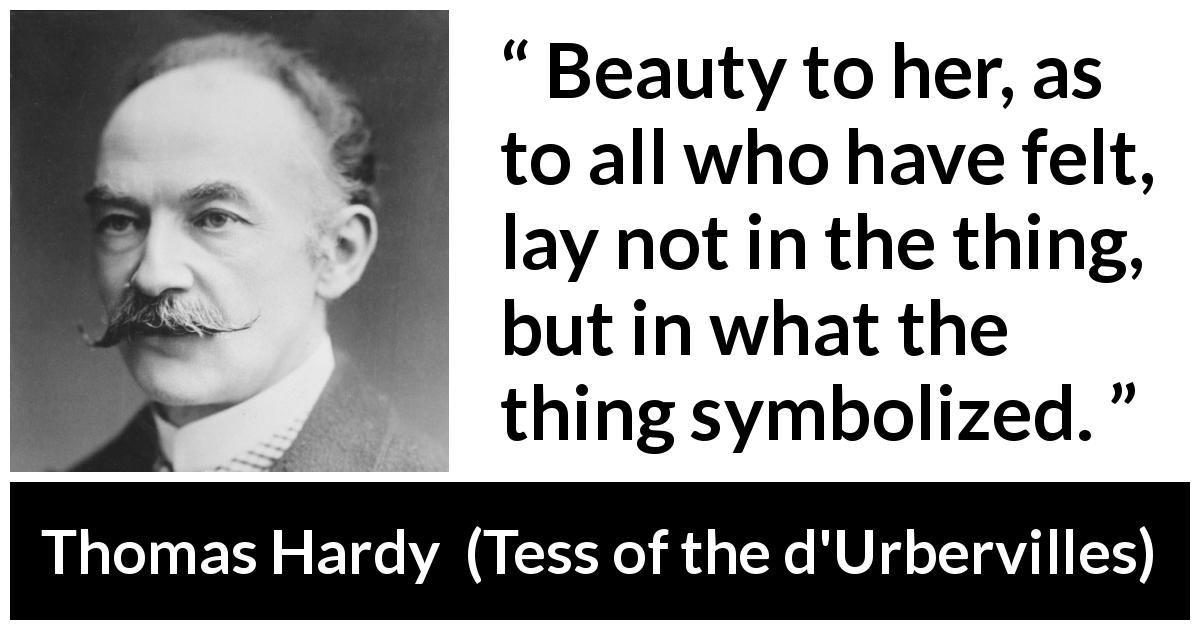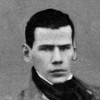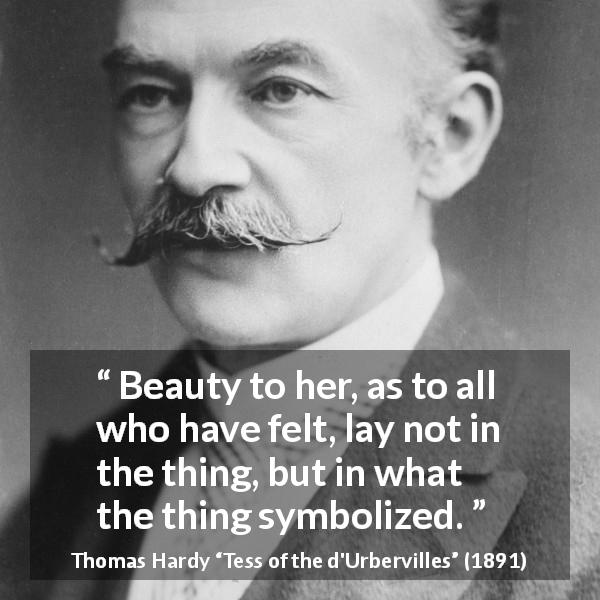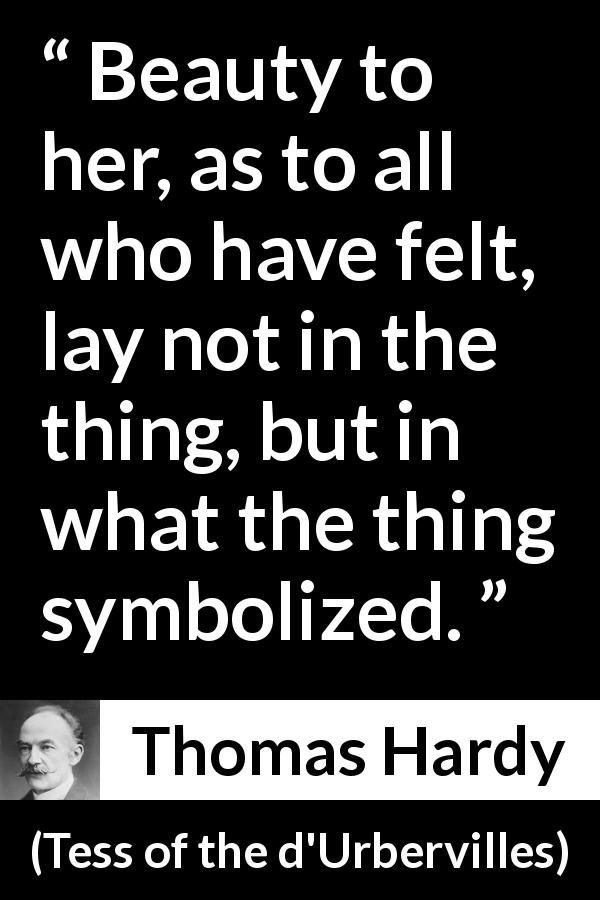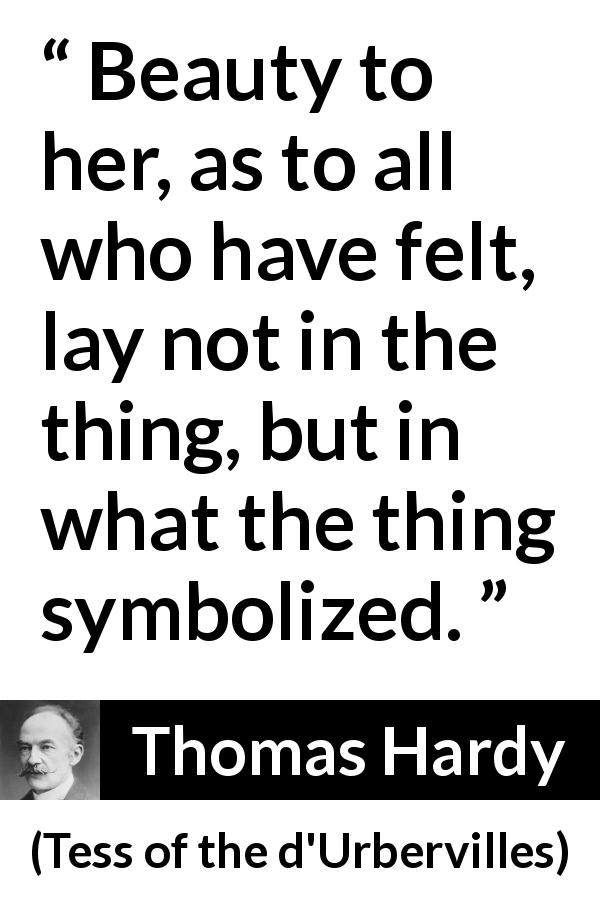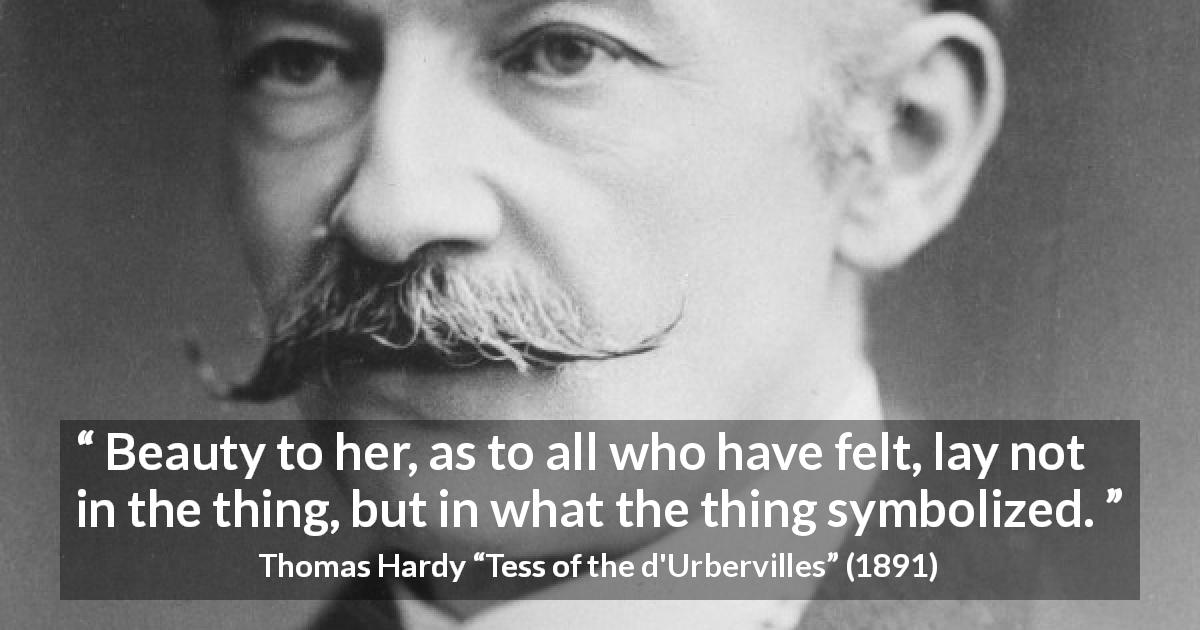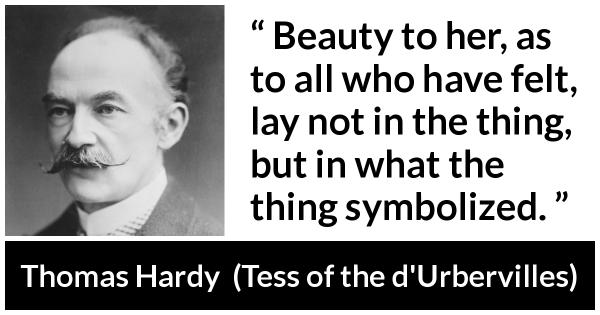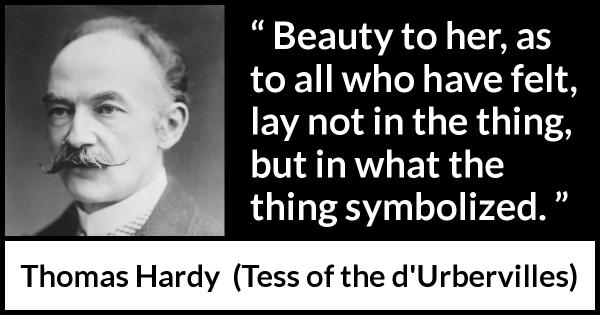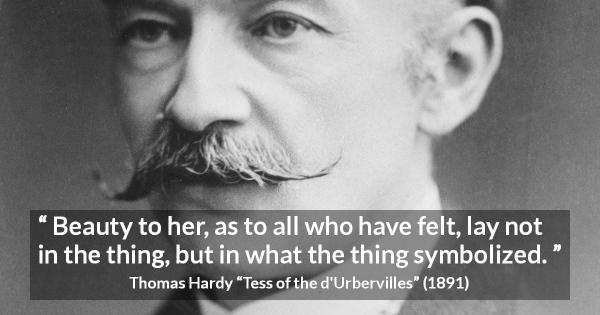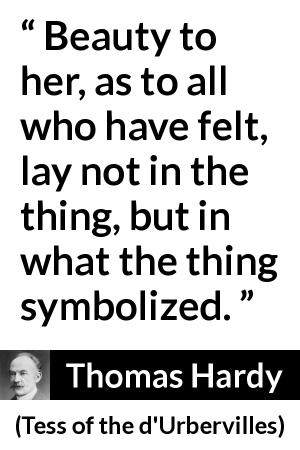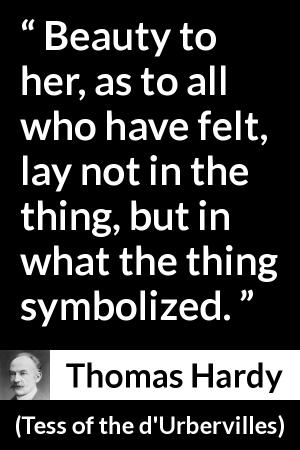“ Beauty to her, as to all who have felt, lay not in the thing, but in what the thing symbolized. ”
Thomas Hardy, Tess of the d'Urbervilles (1891). copy citation
| Author | Thomas Hardy |
|---|---|
| Source | Tess of the d'Urbervilles |
| Topic | beauty things symbol |
| Date | 1891 |
| Language | English |
| Reference | |
| Note | |
| Weblink | http://www.gutenberg.org/files/110/110-h/110-h.htm |
Context
“Instead of the great enclosures of a hundred acres in which she was now accustomed to toil, there were little fields below her of less than half-a-dozen acres, so numerous that they looked from this height like the meshes of a net. Here the landscape was whitey-brown; down there, as in Froom Valley, it was always green. Yet it was in that vale that her sorrow had taken shape, and she did not love it as formerly. Beauty to her, as to all who have felt, lay not in the thing, but in what the thing symbolized.
Keeping the Vale on her right, she steered steadily westward; passing above the Hintocks, crossing at right-angles the high-road from Sherton-Abbas to Casterbridge, and skirting Dogbury Hill and High-Stoy, with the dell between them called «The Devil's Kitchen».” source
Keeping the Vale on her right, she steered steadily westward; passing above the Hintocks, crossing at right-angles the high-road from Sherton-Abbas to Casterbridge, and skirting Dogbury Hill and High-Stoy, with the dell between them called «The Devil's Kitchen».” source
